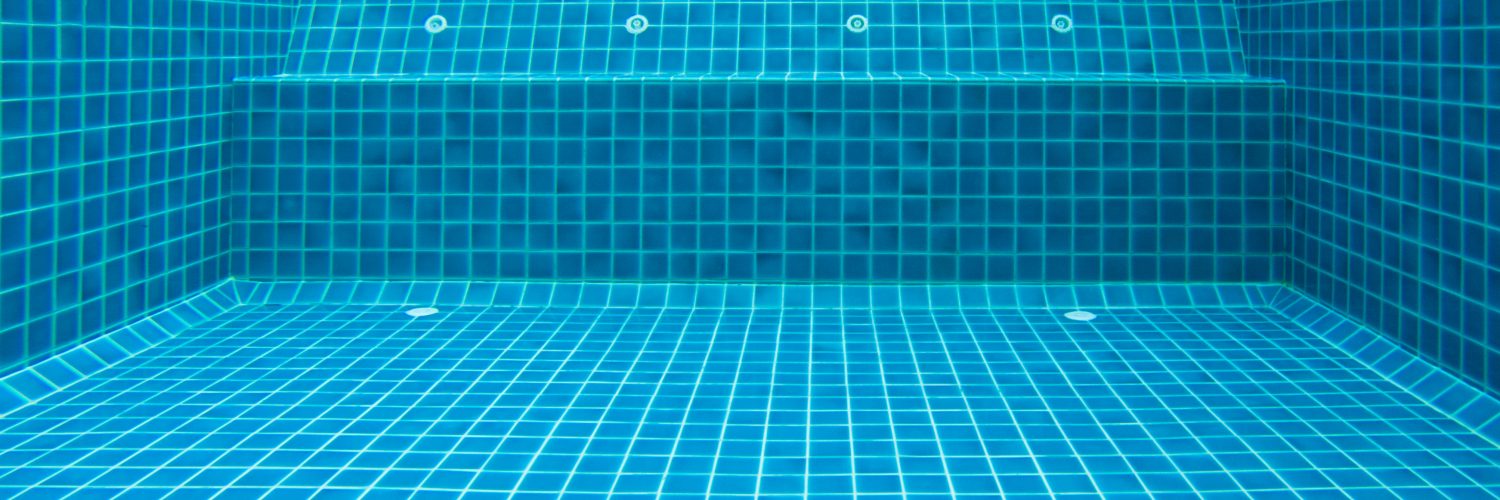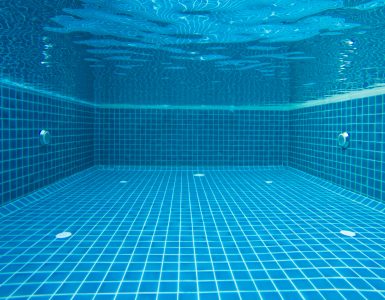In last week’s essay, we discussed the Halachic challenges faced by women with disabilities related to immersion in a Mikva. Aside from the practical challenges of entering and exiting the Mikva using a chair or other assistive device, there is also a potential issue of “Tevila Al Gabei Keilim” – immersing while standing atop vessels – which is disqualified by Chaza”l (Shulchan Aruch, Y.D. 198:31). At the conclusion of the essay, we described how she may immerse with the aid of another woman. However, this is not always a viable option and many contemporary Rabbanim have consulted and collaborated with engineers to develop a better solution.
To briefly review the relevant Halachos, immersing in a vessel that can contract Tuma is invalid Min haTorah, even if it is filled with water that is kosher for immersion. The Chachamim further forbade immersion in a vessel even if it is placed inside a kosher Mikva. The Gemara in Nida (66b) clarifies that the basis for this stringency is “Gezeiras Merchatza’os” – the concern that permitting immersion in vessels within a Mikva would lead people to immerse in freestanding vessels (i.e., that were not in a Mikva), which, as stated, is invalid Min haTorah. The Gemara also mentions another possible issue – “Bi’asusa” (fear) – which is the concern that a woman standing atop a vessel would be afraid of falling and will therefore not immerse properly.
There is a Machlokes Rishonim as to which of the reasons is upheld in Halacha. According to the Ra’avad, both reasons are considered, thus, even in cases where there is no concern of Bi’asusa, the immersion is still invalid due to Gezeiras Merchatza’os. However, in a case where the only concern is Bi’asusa and there is no concern of Gezeiras Merchatza’os (such as where the vessel is not of the size to contract Tuma), the immersion would be valid Bedieved (see the Taz ibid. 31).
The Rosh has a more stringent view. Whereas the Ra’avad validates immersion while standing on earthenware vessels, since they do not contract Tumas Midras, the Rosh invalidates it even Bedi’eved. However, the Tur’s understanding is that the Rosh would validate the Tevila Bedi’eved.[1]
Last week’s essay also offered several interpretations of the Rambam’s position and also discussed the justification for the Minhag recorded by the Poskim to fasten wooden steps in the Mikva, namely:
- Given that the steps were formed from the outset with the intention that they be affixed to the Mikva, they are considered part of its structure and do not contract Tuma.
- There is a distinction between steps that were designed to sit or lean upon that can contract Tumas Midras and the steps in question that were designed only to be stood upon and do not contract Tumas Midras.
- According to the Taz (ibid. 31), the Halacha is not in accordance with the Shulchan Aruch who rules like the Ra’avad but like the Rosh and Rash who hold that the basis for the Isur of Tevila Al Gabei Keilim is not Gezeiras Merchatza’os. Their reasons do not apply to wooden steps.
The Rash states that if a vessel is not affixed to the Mikva, there is no Isur in immersing while standing on it, even if it is capable of contracting Tuma. The Chazon Ish contends (Mikvaos, Tinyana 129:7) that the Ra’avad must also agree to this distinction, else how is it permissible to immerse one vessel within another?[2] Moreover, the Rosh states (Mikvaos 5) that Tevila Al Gabei Keilim is only forbidden when the vessel in question is not entirely surrounded by the water of the Mikva.
In light of the above, an apparatus that cannot contract Tuma would be kosher according to the Ra’avad. If it is not affixed to the Mikva, it would be kosher according to the Rosh as well. If it is surrounded by water on all sides, that would be another reason to say that it would be kosher according to the Rosh.
To fulfill all of these requirements (thus taking into account all of the views in the Rishonim), Rav Shmuel Eliezer Stern (Emek Halacha, Asya 1) proposed an ingenious suggestion. He contended that if one would interpose an item that does not contract Tuma (such as a stone) between the person immersing and the vessel, the Tevila would be valid.
Rav Stern uses this idea to answer a question posed by R’ Akiva Eger. The Shulchan Aruch (201:7) rules that if one takes a large barrel and perforates it so that the water in it would not be considered “Mayim She’uvim” (drawn water which is invalid for a Mikva) and then affixes the barrel to the Mikva, a Tevila while standing on the barrel is valid. R’ Akiva Eger asks that since the barrel can still contract Tuma after being perforated, it should disqualify the Tevila. Rav Stern answered that the Shulchan Aruch was discussing a case in which an item that could not contract Tuma was interposed between the person immersing and the barrel, thus making it a valid Tevila. (The Shulchan Aruch did not emphasize this because the emphasis was on the fact that the perforation avoids the issue of Mayim She’uvim.) Rav Stern supports his contention from the Levush (198:31), and notes that the Imrei Eish[3] also made this conclusion (Y.D. 78).
Another basis for leniency can be found in R’ Akiva Eger’s Teshuva (Shu”t Mahadura Kama Siman 40) addressing a great debate regarding immersing in a river. The custom at the time was to perforate a barrel, float it on the river, and the women would get inside it and immerse. R’ Akiva Eger ruled that although the barrel could contract Tumas Midras (since it was designated for humans to sit inside it), which according to the Ra’avad should be a reason to disqualify the Tevila due to Gezeiras Merchatza’os, it could nevertheless be permitted. He reasoned:
I have an argument for leniency. One could say that it is only when [the vessel] is permanently attached to the ground [of the floor of the Mikva] that it could be said to be comparable to Merchatza’os. But in this case where it isn’t affixed to the floor, but it is [floating] on the water, one could say that it isn’t comparable to Merchatza’os. See the Beis Yosef … who cites the Rashba – and concludes that if it was affixed to the floor, one should not immerse in it lest one come to immerse in Merchatza’os. And since many Poskim do not hold like the Ra’avad in this regard, and it could be argued that the Ra’avad would agree in a case like this, one may rely on this reasoning to be lenient.
If so, if one makes use of a device or apparatus that cannot contract Tuma, or one inserts an item that does not contract Tuma into the vessel in the Mikva, or if the vessel in question is not affixed to the floor of the Mikva, and certainly if it floats in the Mikva and is surrounded by water on all sides, it would pass Halachic muster.
The Poskim consider the option of a mechanical arm attached to the ceiling of the Mikva that holds a chair on which the person sits to be lowered into the Mikva for Tevila. The chair on the end of the arm would need to be perforated so that it would not be considered a vessel and not able to contract Tuma. However, this alone is not sufficient since the Tevila is invalid if the supporting item can contract Tumas Midras according to the Ra’avad. In this case, the chair is designed to fully support the weight of the person immersing, thus it can certainly contract Tumas Midras. Therefore, it is imperative that the chair be made of a material that cannot contract Tuma. Today, the suggestion would be to use plastic since it is synthetic and not made of a natural material that can contract Tuma according to the majority of Poskim.
Once the seat (and the area on which the feet rest) are made of a material that cannot contract Tuma, it does not matter that the mechanical arm and its hardware are made of materials that do contract Tuma as they are Bateil to the seat.
As stated above (and discussed at length in our previous essay), the main basis for permitting wooden beams in the Mikva is that they are attached and therefore Bateil. In this case, the mechanical arm moves (by design) and is not entirely Kavua (fixed). Rav Stern compared it to the case discussed by the Poskim of a barrel attached to a spring by a chain. The Poskim argue whether the barrel could be compared to the wooden beams that are permanently attached in the Mikva and are therefore Bateil. He argues that even those who hold that the barrel on a chain is not considered Kavua would agree in the case of the mechanical arm since it is more Kavua than the barrel on a chain. (It is likely that the same would apply to a mechanical arm that is set in a fixed track.)
This takes care of the concern
of Gezeiras Merchatza’os. However, regarding
Bi’asusa we should point out that
immersing without the aid of the mechanical arm (such as while being held or
supported by another woman) is far more frightening and is more likely to cause
her not to immerse properly. By contrast, this apparatus is built according to comprehensive
safety standards and is operated by a trained attendant. The woman is also
fastened in the chair with a safety belt and can thus immerse with peace of
mind.
[1] See the Beis Yosef (ibid.) and the Gra (31) who concurs.
[2] [Editor’s note: Although the Ra’avad holds that Tevila Al Gabei Keilim is invalid due to both Gezeiras Merchatza’os and concerns of Bi’asusa, since the Halacha allows immersing one utensil inside another, the Ra’avad must hold that if the utensil is not affixed to the Mikva, Gezeiras Merchatza’os must not apply.]
[3] R’ Meir Eisenstadt, Av Beis Din of Ungvar (1786-1852)















